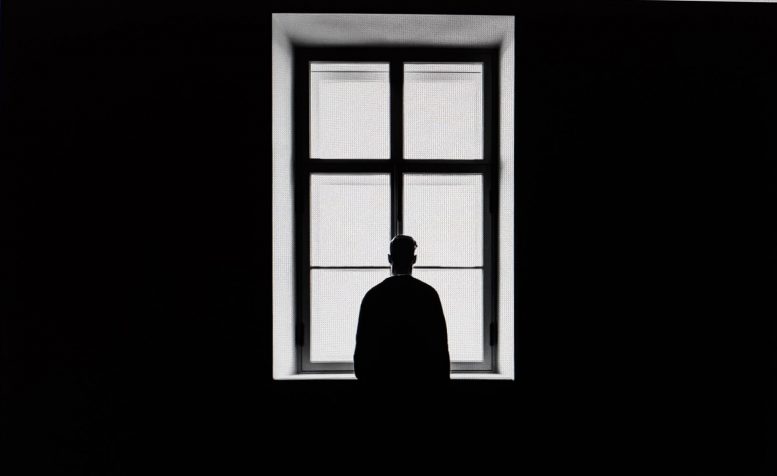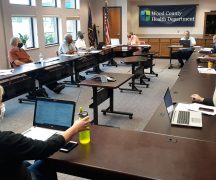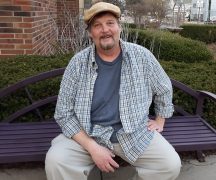By JAN LARSON McLAUGHLIN
BG Independent News
In crises, most humans react by reaching out to others to offer or ask for support. The coronavirus pandemic has cut off that lifeline for many.
COVID-19 has left vulnerable people facing the pandemic alone.
That has created a heightened sense of despair for many, according to Aimee Coe, director of community programs for the Wood County Alcohol, Drug Addiction and Mental Health Services Board.
Coe presented an overview last week of the board’s services to the Bowling Green League of Women Voters Mental Health Committee.
The county’s mental health services have seen a spike in demands since the pandemic hit, causing shutdowns in the state. The number of phone calls to Unison, the county’s crisis service, has gone from 138 in January, to 492 in June, 713 in July, and 571 in August.
“They’re not new problems,” Coe said about issues overwhelming many. “They are just made worse by what is going on.”
The lack of customary support systems or stress outlets is leading to greater levels of anxiety and feelings of dread.
“The struggle to balance literal survival with all the things that make surviving worthwhile has never been so clear, with the COVID-19 pandemic forcing many to sacrifice social connections – and therefore quality of life – for life itself,” Coe said. “Being socially connected in meaningful ways is actually key to human health and survival.”
But that key isn’t available now for many – leading to despair.
“We won’t necessarily know about all the impact COVID has had on our mental health until it’s over,” Coe said.
The government is aware of the mental health crisis occurring and has filtered some CARES Act funding to mental health care providers, she said.
“We certainly don’t want to lose our providers when people may need them most.”
Isolation and quarantining have led to spikes in substance abuse, overdose deaths, domestic violence and sexual abuse, Coe said.
The pandemic has created three waves of crises so far, she explained. The first wave brought anxiety and stress, the second saw spikes in domestic violence and sexual abuse, and the third wave saw stress over job losses, grief and racism.
These waves are particularly troubling since Ohio was already experiencing increases in “deaths of despair.”
A report from the Ohio Alliance for Innovation in Population Health revealed that drug overdoses, suicides and alcohol-related liver disease, or “deaths of despair,” rose in Ohio over the last decade. From 2010 to 2019, so-called “deaths of despair” killed 53,632 people in the state.
Mental health care providers are responding by offering telehealth services.
“That has been a lifesaver for people who previously struggled to get services,” Coe said.
People in need of help have been calling 211 to get connected to the right services, and a crisis text line has been set up.
Special efforts are also being made to reach out to health care workers, first responders, nursing home staffs, and teachers. An Ohio Hero Line has been established to allow these workers to talk to peers struggling with shared issues.
Coe talked about how people can help reduce stress felt by many.
“Be kind – that goes a long way,” she said. “Kind words when someone is struggling can mean everything.”
Also during the presentation, Coe explained the Wood County Alcoholic, Drug Abuse and Mental Health Services role of funding, promoting and overseeing services. Information on services can be found at www.wcadamhs.org.
The board contracts for services with agencies like NAMI, Children’s Resource Center, A Renewed Mind, Harbor, Unison, and the Wood County Educational Service Center.
The board works on quarterly themes, such as “Mental health is as important as physical health” and “You’re not alone.” The organization is currently working on “Stigma busters” addressing myths about mental illness.
WCADAMHS continues to work to prevent suicides, with efforts including a TV commercial showing local survivors who have lost loved ones.
“Wood County experiences this kind of loss,” Coe said.
The county has a Survivors of Suicide Loss Support Group, and is working to set up a group for people who have attempted suicide and survived.
“We continue to recognize that more support groups are needed,” Coe said.





